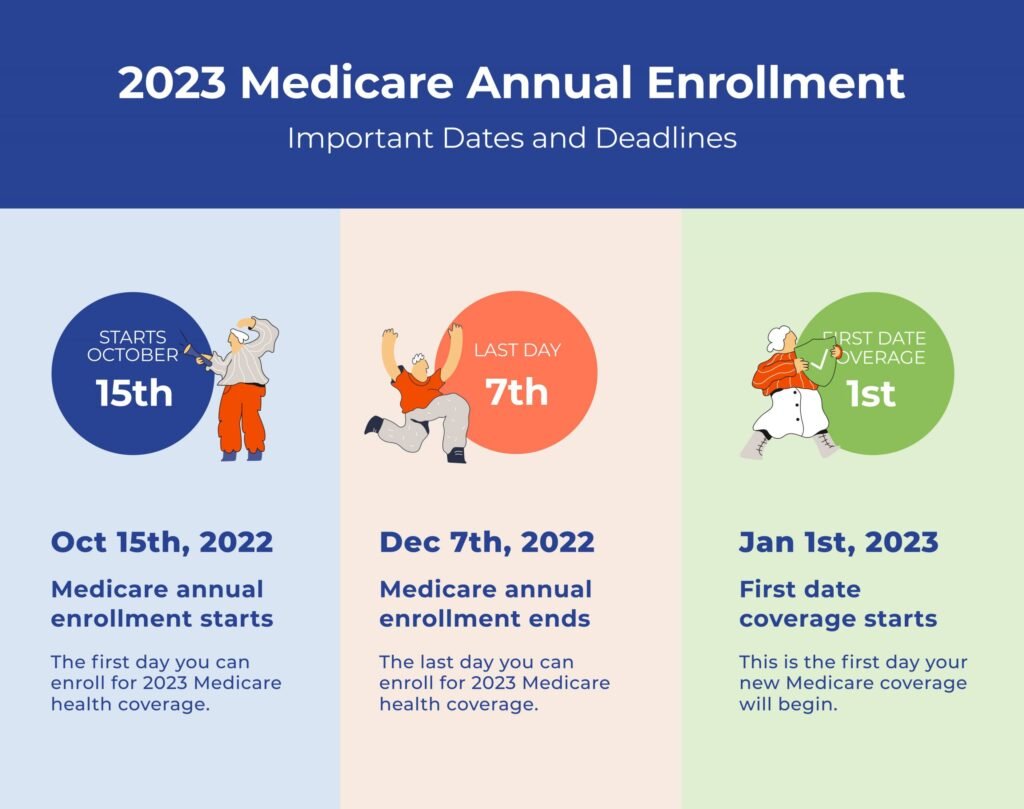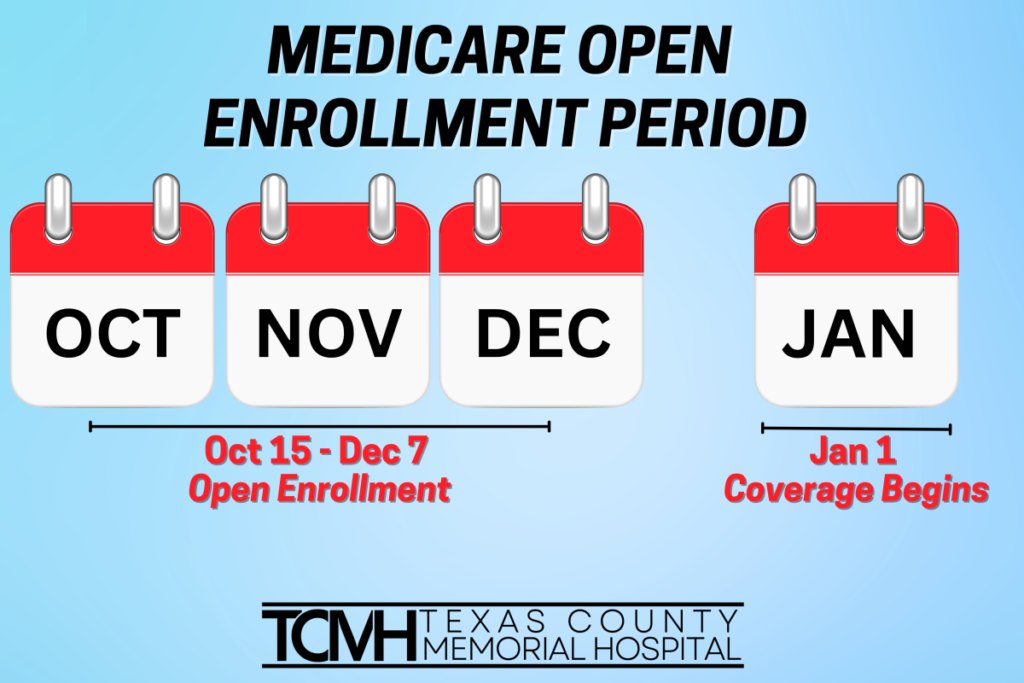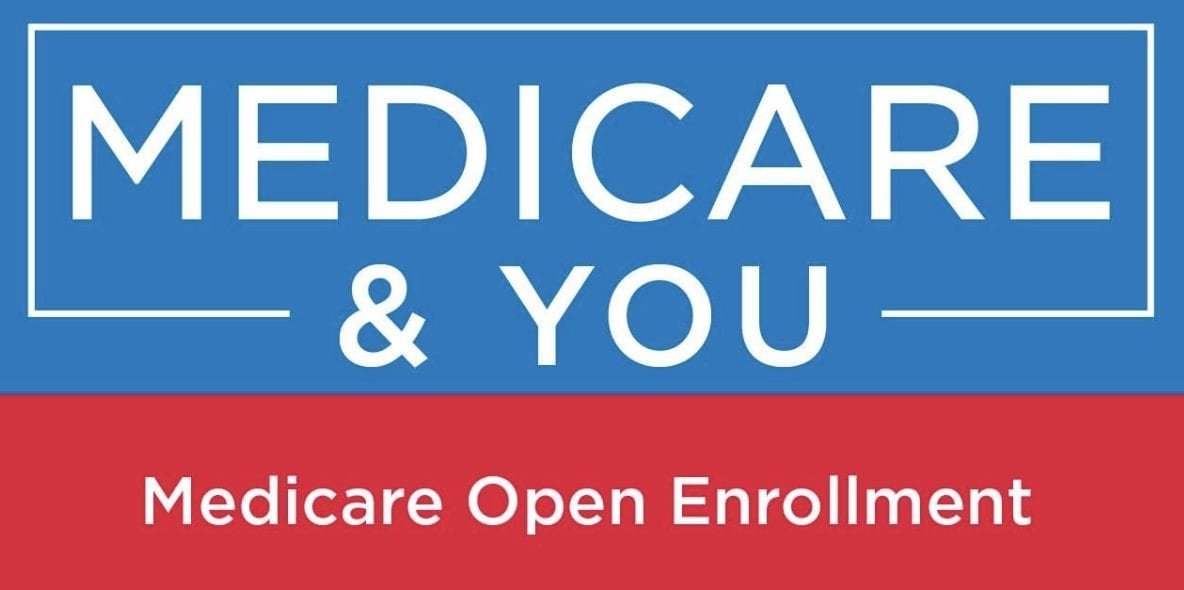Introduction to Medicare Open Enrollment:
Medicare Open Enrollment: Your chance to review and update your health coverage.
Medicare open enrollment is a critical time each year for millions of people to review and, if necessary, update their Medicare coverage. Open enrollment runs from October 15 to December 7 annually, giving Medicare recipients the chance to explore their current plan and see if it still meets their needs for the upcoming year.
During this period, people can change from Original Medicare (Parts A and B) to a Medicare Advantage plan (Part C), switch from one Medicare Advantage plan to another, or even change their prescription drug coverage (Part D).
The importance of Medicare open enrollment lies in the flexibility it offers, allowing people to adapt their coverage as their healthcare needs evolve. Health needs often change over time, whether it’s due to new medical conditions, changes in prescriptions, or simply wanting more comprehensive coverage. Reviewing the available options can make a significant difference in terms of out-of-pocket costs, access to preferred healthcare providers, and even the quality of benefits available.
This period is especially important because outside of open enrollment, it’s often difficult to make changes to Medicare plans unless you qualify for a special enrollment period due to certain life events.During open enrollment, Medicare beneficiaries should evaluate factors such as premiums, copayments, and coverage networks. They should also review how each plan covers specific services they need, like dental or vision, which are sometimes excluded from Original Medicare but may be available through a Medicare Advantage plan.
It’s also a good idea to compare prescription drug plans since changes in coverage and costs for medications can vary widely year-to-year. A plan that was affordable and met all needs one year might not be the best fit for the following year if costs increase or if a drug is dropped from the formulary.For those new to Medicare or unsure where to start, the Medicare website offers tools to compare plans in detail, helping users to identify the most cost-effective and suitable coverage.
Additionally, local resources, like Medicare counselors and state health insurance assistance programs (SHIPs), provide free guidance to help beneficiaries make informed decisions. Taking time during the Medicare open enrollment period to review and, if needed, adjust coverage can lead to greater savings, improved health coverage, and peace of mind about healthcare expenses.
The Medicare open enrollment period offers several benefits, especially for those whose healthcare needs or financial situations change over time.

Here are some key benefits of taking advantage of this period:
1. Customized Coverage:
Open enrollment allows people to adjust their Medicare coverage based on their current healthcare needs. For example, if someone develops a new health condition or needs specific treatments, they can switch to a Medicare Advantage plan or Part D prescription plan that better covers their requirements. This flexibility ensures beneficiaries have the right coverage each year.
2. Cost Savings:
Plans often change their premiums, deductibles, and copayments every year, which means a plan that was affordable last year might be more expensive this year. During open enrollment, people can compare costs across different plans and choose an option that offers the best balance of coverage and affordability. This can help reduce out-of-pocket expenses and make healthcare more manageable on a fixed budget.
3. Expanded Benefits:
Medicare Advantage plans often include extra benefits not covered by Original Medicare, such as vision, dental, hearing, and wellness programs. Open enrollment gives beneficiaries the chance to switch to a Medicare Advantage plan to access these added benefits if they find them valuable.
4. Access to Preferred Doctors and Hospitals:
Medicare plans can have different provider networks, meaning certain doctors, hospitals, or specialists might not be covered by one plan but could be available in another. During open enrollment, beneficiaries can choose a plan that includes their preferred providers or that offers a broader network if they need more choices.
5. Better Prescription Drug Coverage:
Part D plans for prescription drugs can change each year, including the list of covered medications (formulary) and the costs for each drug tier. Open enrollment allows beneficiaries to find a Part D plan that covers their current medications at the lowest possible cost, helping to avoid unexpected expenses at the pharmacy.
6. Peace of Mind:
Reviewing and adjusting Medicare coverage during open enrollment provides peace of mind. By taking the time to ensure that their plan fits their health and financial needs, beneficiaries can feel more secure knowing that they’ll have the support they need in the coming year without unexpected costs or coverage gaps.The Medicare open enrollment period is an opportunity to make informed decisions, find better coverage, and potentially save money, all of which contribute to better healthcare management and financial well-being.

Disadvantages
While Medicare open enrollment offers many benefits, there are also some disadvantages and challenges that can make the process stressful or overwhelming.
Here are a few common disadvantages to consider:
1. Complexity and Confusion:
The Medicare system can be complicated, with a variety of options to choose from, including Original Medicare, Medicare Advantage, and various Part D plans. Each of these has its own set of rules, benefits, and limitations. Sorting through all the options to understand which one best fits individual needs can be confusing and time-consuming, especially for people who are not familiar with healthcare terminology.
2. Limited Timeframe:
The open enrollment period only lasts from October 15 to December 7. This short window can put pressure on beneficiaries to make quick decisions, which can be overwhelming, especially for those who need to consult family members, healthcare providers, or financial advisors. If someone misses this window, they may have to wait until the next year’s open enrollment to make changes, unless they qualify for a special enrollment period.
3. Potential for Higher Costs:
Some people may unintentionally switch to a plan with higher costs or less coverage if they don’t fully understand the details. Plans can have varying costs for premiums, deductibles, and out-of-pocket limits, and it’s possible to end up with a plan that seems appealing but ends up being more costly due to factors like higher copayments or fewer covered services.
4. Provider and Network Limitations:
Medicare Advantage plans, in particular, often have specific provider networks. While switching to a new plan might seem like an improvement, beneficiaries could find that their preferred doctors or hospitals are not in-network, which can lead to higher out-of-pocket costs or the need to switch providers. This can be particularly difficult for those with established relationships with certain healthcare providers.
5. Frequent Plan Changes:
Insurance providers often change the details of their plans each year, adjusting premiums, deductibles, and coverage options. This means that even if someone finds a good plan one year, they may need to go through the same research process again the next year if significant changes are made. This constant need to review and update coverage can be frustrating for beneficiaries looking for stability.
6. Unreliable or Misleading Marketing:
During open enrollment, people often receive a flood of mail, calls, and ads from insurance companies promoting their plans. Some of these marketing materials can be confusing or even misleading, making it harder for beneficiaries to make clear-headed, informed choices.
For those who may struggle to discern which information is accurate or relevant, this can lead to frustration or poor choices.While open enrollment is an opportunity to adjust Medicare coverage, these potential disadvantages mean that beneficiaries need to approach it carefully. Taking time to understand each option, consulting with trusted resources, and seeking help if needed can help overcome some of these challenges.
In conclusion:
, Medicare open enrollment is a valuable opportunity for beneficiaries to review and adjust their coverage to better meet their healthcare needs and budget. It offers flexibility to find more suitable plans, potentially reduce costs, and gain access to additional benefits like dental or vision care. However, the process can be challenging due to its complexity, limited timeframe, and sometimes overwhelming choice of plans.
By approaching open enrollment thoughtfully, using resources like the Medicare website, or consulting with knowledgeable professionals, beneficiaries can make informed decisions that maximize their healthcare coverage and minimize financial strain. Ultimately, investing time in this process can lead to improved healthcare access, greater peace of mind, and better financial predictability throughout the coming year.
you must watch 👁️👁️ this article 👇👇👇
Compassionate Care: What It Means and Why It Matters?





